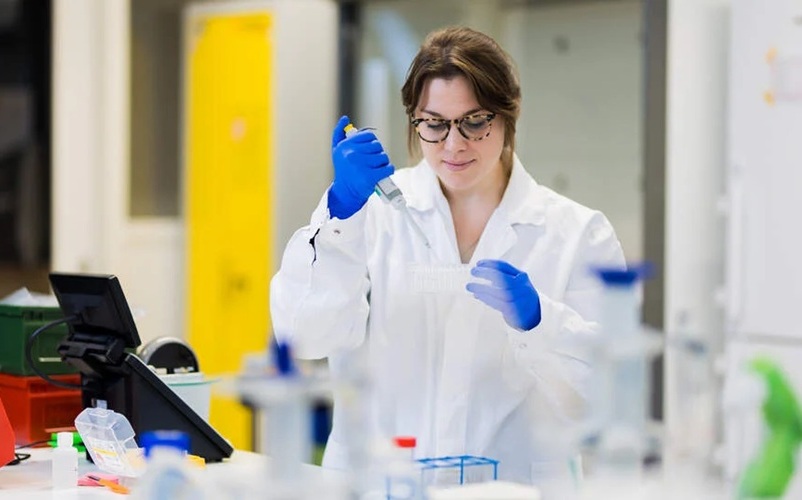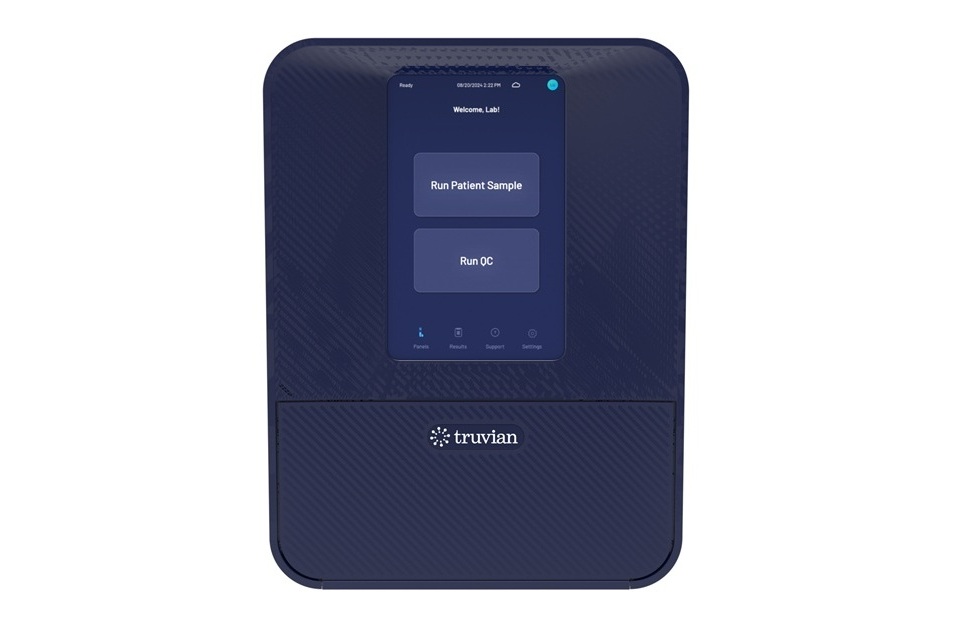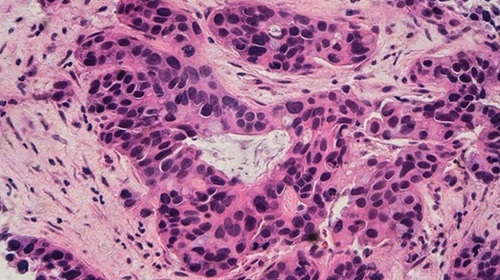Computer-Designed Proteins Programmed to Deactivate Flu Viruses
|
By LabMedica International staff writers Posted on 20 Jun 2012 |
Computer-designed proteins are now being constructed to fight the flu. Researchers are demonstrating that proteins found in nature, but that do not normally bind the flu, can be engineered to act as broad-spectrum antiviral agents against a range of flu virus strains, including H1N1 pandemic influenza.
“One of these engineered proteins has a flu-fighting potency that rivals that of several human monoclonal antibodies,” said Dr. David Baker, a professor of biochemistry at the University of Washington (Seattle, USA), in a report June 7, 2012, published in the journal Nature Biotechnology.
Dr. Baker’s research team is making major inroads in optimizing the function of computer-designed influenza inhibitors. These proteins are constructed via computer modeling to fit exquisitely into a specific nano-sized target on flu viruses. By binding the target areas similar to a key into a lock, they keep the virus from changing shape, a tactic that the virus uses to infect living cells. The research efforts, analogous to docking a space station but on a molecular level, are made possible by computers that can describe the panoramas of forces involved on the submicroscopic scale.
Dr. Baker is head of the new Institute for Protein Design Center at the University of Washington. Biochemists, engineers, computer scientists, and medical specialists at the center are engineering innovative proteins with new functions for specific purposes in medicine, environmental protection, and other areas. Proteins underlie all typical activities and structures of living cells, and also control disease actions of pathogens such as viruses. Abnormal protein formation and interactions are also implicated in many inherited and later-life chronic disorders.
Because influenza is a serious worldwide public health problem due to its genetic shifts and drifts that sporadically become more virulent, the flu is one of the key interests of the Institutes for Protein Design and its collaborators in the United States and worldwide. Researchers are trying to meet the vital need for better therapeutic agents to protect against this very adaptable and extremely infective virus. Vaccines for new strains of influenza take months to develop, evaluate, and manufacture, and are not helpful for those already sick. The long response time for vaccine creation and distribution is unsettling when a more lethal strain abruptly emerges and spreads rapidly. The speed of transmission is accelerated by the lack of widespread immunity in the general population to the latest form of the virus.
Flu trackers refer to strains by their H and N subtypes. H stands for hemagglutinins, which are the molecules on the flu virus that enable it to invade the cells of respiratory passages. The virus’s hemagglutinin molecules attach to the surface of cells lining the respiratory tract. When the cell tries to engulf the virus, it makes the error of pulling it into a more acidic location. The drop in pH changes the shape of the viral hemagglutinin, thereby allowing the virus to fuse to the cell and open an entry for the virus’ RNA to come in and start making fresh viruses. It is hypothesized that the Baker Lab protein inhibits this shape change by binding the hemagglutinin in a very specific orientation and thus keeps the virus from invading cells.
Dr. Baker and his team wanted to create antivirals that could react against a wide variety of H subtypes, as this versatility could lead to a comprehensive therapy for influenza. Specifically, viruses that have hemagglutinins of the H2 subtype are responsible for the deadly pandemic of 1957 and continued to circulate until 1968. People born after that date have not been exposed to H2 viruses. The recent avian flu has a new version of H1 hemagglutinin. Data suggest that Dr. Baker’s proteins bind to all types of the group I hemagglutinin, a group that includes not only H1 but also the pandemic H2 and avian H5 strains.
The methods developed for the influenza inhibitor protein design, according to Dr. Baker, could be “a powerful route to inhibitors or binders for any surface patch on any desired target of interest.” For example, if a new disease pathogen arises, scientists could figure out how it interacts with human cells or other hosts on a molecular level. Scientists could then employ protein interface design to create a diversity of small proteins that they predict would block the pathogen’s interaction surface.
Genes for large numbers of the most promising, computer-designed proteins could be tested using yeast cells. After additional molecular chemistry research to search for the best binding among those proteins, those could be reprogrammed in the laboratory to undergo mutations, and all the mutated forms could be stored in a “library” for an in-depth examination of their amino acids, molecular architecture, and energy bonds.
Sophisticated technologies would allow the scientists to rapidly browse through the library to find those tiny proteins that clung to the pathogen surface target with pinpoint accuracy. The finalists would be selected from this pool for excelling at blocking the pathogen from attaching to, entering, and infecting human or animal cells.
The utilization of deep sequencing, the same technology now used to sequence human genomes cheaply, was particularly central in creating detailed maps relating sequencing to function. These maps were used to reprogram the design to achieve a more exact interaction between the inhibitor protein and the virus molecule. It also enabled the scientists, they said, “to leapfrog over bottlenecks” to improve the activity of the binder. They were able to see how small contributions from many small alterations in the protein, too difficult to see individually, could together create a binder with better attachment strength.
“We anticipate that our approach combining computational design followed by comprehensive energy landscape mapping,” Dr. Baker said, “will be widely useful in generating high-affinity and high-specificity binders to a broad range of targets for use in therapeutics and diagnostics.”
Related Links:
University of Washington
“One of these engineered proteins has a flu-fighting potency that rivals that of several human monoclonal antibodies,” said Dr. David Baker, a professor of biochemistry at the University of Washington (Seattle, USA), in a report June 7, 2012, published in the journal Nature Biotechnology.
Dr. Baker’s research team is making major inroads in optimizing the function of computer-designed influenza inhibitors. These proteins are constructed via computer modeling to fit exquisitely into a specific nano-sized target on flu viruses. By binding the target areas similar to a key into a lock, they keep the virus from changing shape, a tactic that the virus uses to infect living cells. The research efforts, analogous to docking a space station but on a molecular level, are made possible by computers that can describe the panoramas of forces involved on the submicroscopic scale.
Dr. Baker is head of the new Institute for Protein Design Center at the University of Washington. Biochemists, engineers, computer scientists, and medical specialists at the center are engineering innovative proteins with new functions for specific purposes in medicine, environmental protection, and other areas. Proteins underlie all typical activities and structures of living cells, and also control disease actions of pathogens such as viruses. Abnormal protein formation and interactions are also implicated in many inherited and later-life chronic disorders.
Because influenza is a serious worldwide public health problem due to its genetic shifts and drifts that sporadically become more virulent, the flu is one of the key interests of the Institutes for Protein Design and its collaborators in the United States and worldwide. Researchers are trying to meet the vital need for better therapeutic agents to protect against this very adaptable and extremely infective virus. Vaccines for new strains of influenza take months to develop, evaluate, and manufacture, and are not helpful for those already sick. The long response time for vaccine creation and distribution is unsettling when a more lethal strain abruptly emerges and spreads rapidly. The speed of transmission is accelerated by the lack of widespread immunity in the general population to the latest form of the virus.
Flu trackers refer to strains by their H and N subtypes. H stands for hemagglutinins, which are the molecules on the flu virus that enable it to invade the cells of respiratory passages. The virus’s hemagglutinin molecules attach to the surface of cells lining the respiratory tract. When the cell tries to engulf the virus, it makes the error of pulling it into a more acidic location. The drop in pH changes the shape of the viral hemagglutinin, thereby allowing the virus to fuse to the cell and open an entry for the virus’ RNA to come in and start making fresh viruses. It is hypothesized that the Baker Lab protein inhibits this shape change by binding the hemagglutinin in a very specific orientation and thus keeps the virus from invading cells.
Dr. Baker and his team wanted to create antivirals that could react against a wide variety of H subtypes, as this versatility could lead to a comprehensive therapy for influenza. Specifically, viruses that have hemagglutinins of the H2 subtype are responsible for the deadly pandemic of 1957 and continued to circulate until 1968. People born after that date have not been exposed to H2 viruses. The recent avian flu has a new version of H1 hemagglutinin. Data suggest that Dr. Baker’s proteins bind to all types of the group I hemagglutinin, a group that includes not only H1 but also the pandemic H2 and avian H5 strains.
The methods developed for the influenza inhibitor protein design, according to Dr. Baker, could be “a powerful route to inhibitors or binders for any surface patch on any desired target of interest.” For example, if a new disease pathogen arises, scientists could figure out how it interacts with human cells or other hosts on a molecular level. Scientists could then employ protein interface design to create a diversity of small proteins that they predict would block the pathogen’s interaction surface.
Genes for large numbers of the most promising, computer-designed proteins could be tested using yeast cells. After additional molecular chemistry research to search for the best binding among those proteins, those could be reprogrammed in the laboratory to undergo mutations, and all the mutated forms could be stored in a “library” for an in-depth examination of their amino acids, molecular architecture, and energy bonds.
Sophisticated technologies would allow the scientists to rapidly browse through the library to find those tiny proteins that clung to the pathogen surface target with pinpoint accuracy. The finalists would be selected from this pool for excelling at blocking the pathogen from attaching to, entering, and infecting human or animal cells.
The utilization of deep sequencing, the same technology now used to sequence human genomes cheaply, was particularly central in creating detailed maps relating sequencing to function. These maps were used to reprogram the design to achieve a more exact interaction between the inhibitor protein and the virus molecule. It also enabled the scientists, they said, “to leapfrog over bottlenecks” to improve the activity of the binder. They were able to see how small contributions from many small alterations in the protein, too difficult to see individually, could together create a binder with better attachment strength.
“We anticipate that our approach combining computational design followed by comprehensive energy landscape mapping,” Dr. Baker said, “will be widely useful in generating high-affinity and high-specificity binders to a broad range of targets for use in therapeutics and diagnostics.”
Related Links:
University of Washington
Latest BioResearch News
- Genome Analysis Predicts Likelihood of Neurodisability in Oxygen-Deprived Newborns
- Gene Panel Predicts Disease Progession for Patients with B-cell Lymphoma
- New Method Simplifies Preparation of Tumor Genomic DNA Libraries
- New Tool Developed for Diagnosis of Chronic HBV Infection
- Panel of Genetic Loci Accurately Predicts Risk of Developing Gout
- Disrupted TGFB Signaling Linked to Increased Cancer-Related Bacteria
- Gene Fusion Protein Proposed as Prostate Cancer Biomarker
- NIV Test to Diagnose and Monitor Vascular Complications in Diabetes
- Semen Exosome MicroRNA Proves Biomarker for Prostate Cancer
- Genetic Loci Link Plasma Lipid Levels to CVD Risk
- Newly Identified Gene Network Aids in Early Diagnosis of Autism Spectrum Disorder
- Link Confirmed between Living in Poverty and Developing Diseases
- Genomic Study Identifies Kidney Disease Loci in Type I Diabetes Patients
- Liquid Biopsy More Effective for Analyzing Tumor Drug Resistance Mutations
- New Liquid Biopsy Assay Reveals Host-Pathogen Interactions
- Method Developed for Enriching Trophoblast Population in Samples
Channels
Clinical Chemistry
view channel
Chemical Imaging Probe Could Track and Treat Prostate Cancer
Prostate cancer remains a leading cause of illness and death among men, with many patients eventually developing resistance to standard hormone-blocking therapies. These drugs often lose effectiveness... Read more
Mismatch Between Two Common Kidney Function Tests Indicates Serious Health Problems
Creatinine has long been the standard for measuring kidney filtration, while cystatin C — a protein produced by all human cells — has been recommended as a complementary marker because it is influenced... Read moreMolecular Diagnostics
view channel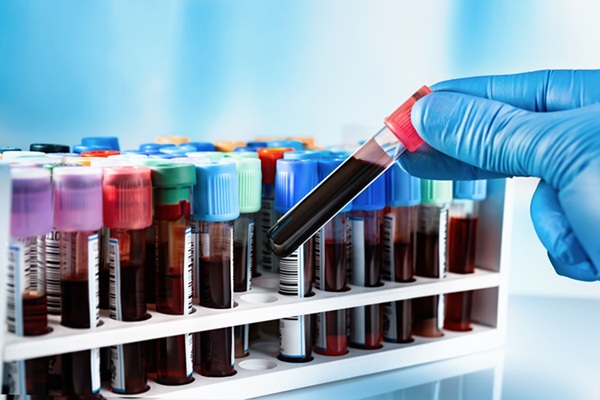
Blood Protein Profiles Predict Mortality Risk for Earlier Medical Intervention
Elevated levels of specific proteins in the blood can signal increased risk of mortality, according to new evidence showing that five proteins involved in cancer, inflammation, and cell regulation strongly... Read more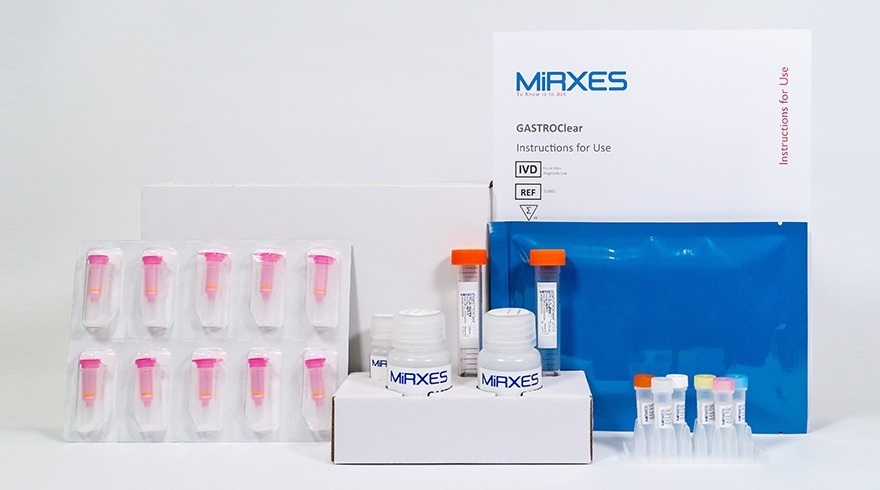
First Of Its Kind Blood Test Detects Gastric Cancer in Asymptomatic Patients
Each year, over 1 million people worldwide are diagnosed with gastric (stomach) cancer, and over 800,000 people die of the disease. It is among the top 5 deadliest cancers worldwide for both men and women.... Read moreHematology
view channel
Platelet Activity Blood Test in Middle Age Could Identify Early Alzheimer’s Risk
Early detection of Alzheimer’s disease remains one of the biggest unmet needs in neurology, particularly because the biological changes underlying the disorder begin decades before memory symptoms appear.... Read more
Microvesicles Measurement Could Detect Vascular Injury in Sickle Cell Disease Patients
Assessing disease severity in sickle cell disease (SCD) remains challenging, especially when trying to predict hemolysis, vascular injury, and risk of complications such as vaso-occlusive crises.... Read more
ADLM’s New Coagulation Testing Guidance to Improve Care for Patients on Blood Thinners
Direct oral anticoagulants (DOACs) are one of the most common types of blood thinners. Patients take them to prevent a host of complications that could arise from blood clotting, including stroke, deep... Read moreImmunology
view channel
Gene Signature Test Predicts Response to Key Breast Cancer Treatment
DK4/6 inhibitors paired with hormone therapy have become a cornerstone treatment for advanced HR+/HER2– breast cancer, slowing tumor growth by blocking key proteins that drive cell division.... Read more
Chip Captures Cancer Cells from Blood to Help Select Right Breast Cancer Treatment
Ductal carcinoma in situ (DCIS) accounts for about a quarter of all breast cancer cases and generally carries a good prognosis. This non-invasive form of the disease may or may not become life-threatening.... Read moreMicrobiology
view channel
Rapid Assay Identifies Bloodstream Infection Pathogens Directly from Patient Samples
Bloodstream infections in sepsis progress quickly and demand rapid, precise diagnosis. Current blood-culture methods often take one to five days to identify the pathogen, leaving clinicians to treat blindly... Read more
Blood-Based Molecular Signatures to Enable Rapid EPTB Diagnosis
Extrapulmonary tuberculosis (EPTB) remains difficult to diagnose and treat because it spreads beyond the lungs and lacks easily accessible biomarkers. Despite TB infecting 10 million people yearly, the... Read more
15-Minute Blood Test Diagnoses Life-Threatening Infections in Children
Distinguishing minor childhood illnesses from potentially life-threatening infections such as sepsis or meningitis remains a major challenge in emergency care. Traditional tests can take hours, leaving... Read more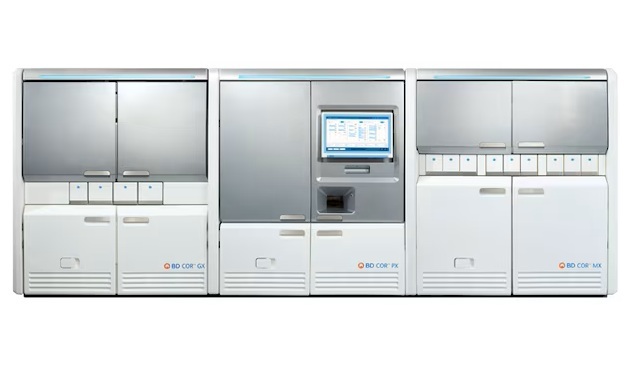
High-Throughput Enteric Panels Detect Multiple GI Bacterial Infections from Single Stool Swab Sample
Gastrointestinal (GI) infections are among the most common causes of illness worldwide, leading to over 1.7 million deaths annually and placing a heavy burden on healthcare systems. Conventional diagnostic... Read morePathology
view channel
AI Tool Rapidly Analyzes Complex Cancer Images for Personalized Treatment
Complex digital biopsy images that typically take an expert pathologist up to 20 minutes to assess can now be analyzed in about one minute using a new artificial intelligence (AI) tool. The technology... Read more
Diagnostic Technology Performs Rapid Biofluid Analysis Using Single Droplet
Diagnosing disease typically requires milliliters of blood drawn at clinics, depending on needles, laboratory infrastructure, and trained personnel. This process is often painful, resource-intensive, and... Read moreTechnology
view channel
AI Saliva Sensor Enables Early Detection of Head and Neck Cancer
Early detection of head and neck cancer remains difficult because the disease produces few or no symptoms in its earliest stages, and lesions often lie deep within the head or neck, where biopsy or endoscopy... Read more
AI-Powered Biosensor Technology to Enable Breath Test for Lung Cancer Detection
Detecting lung cancer early remains one of the biggest challenges in oncology, largely because current tools are invasive, expensive, or unable to identify the disease in its earliest phases.... Read moreIndustry
view channel
Abbott Acquires Cancer-Screening Company Exact Sciences
Abbott (Abbott Park, IL, USA) has entered into a definitive agreement to acquire Exact Sciences (Madison, WI, USA), enabling it to enter and lead in fast-growing cancer diagnostics segments.... Read more













